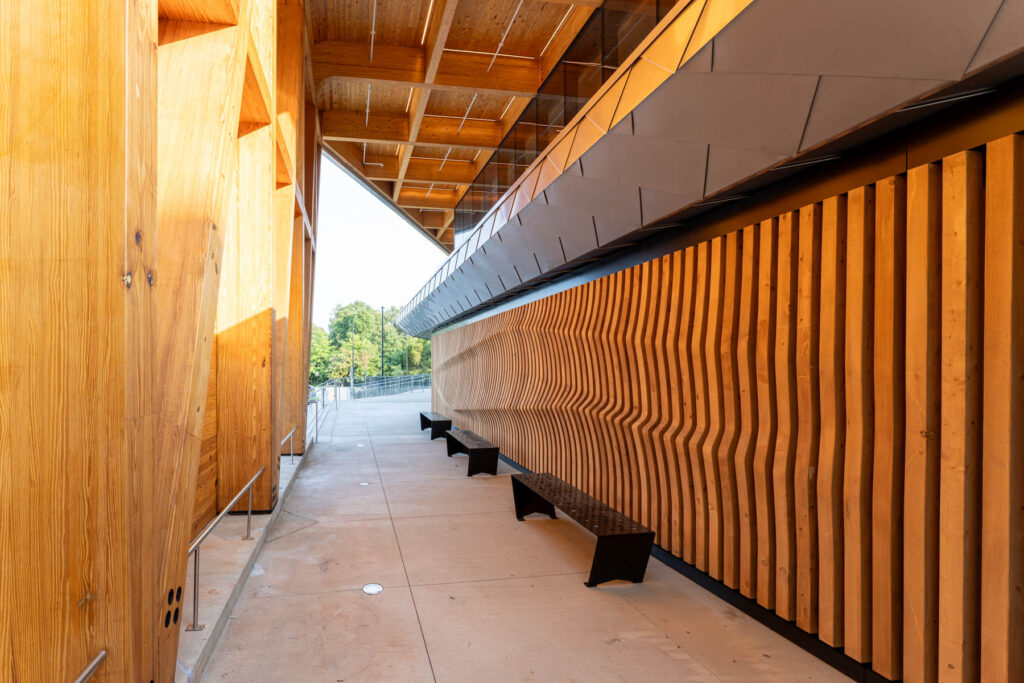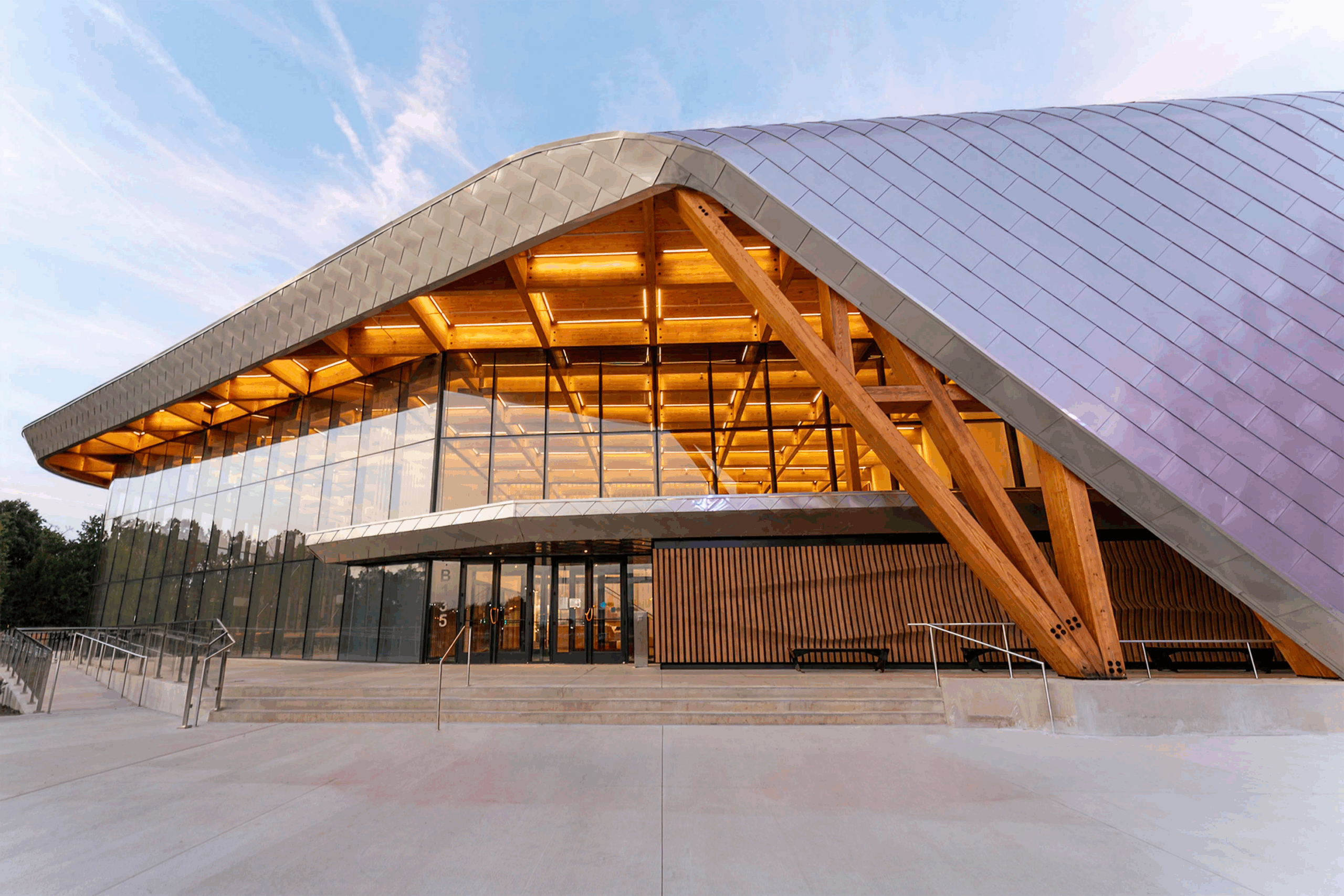
Why Mass Timber Is the Future of Sustainable Commercial Building
Mass timber sustainable commercial building is no longer an experiment. It’s a practical path that blends performance, schedule certainty, and design character. By combining modern manufacturing with the natural strengths of wood, project teams are delivering mass timber buildings that feel warm, install efficiently, and support long-term sustainability goals. For owners and architects exploring smarter material choices, mass timber offers a balance of structural performance, energy efficiency, and aesthetic appeal that’s well suited to contemporary commercial buildings.
What Mass Is Timber and Why It Works
Mass timber construction uses engineered wood products—such as cross laminated timber (CLT) panels and glued laminated timber (glulam) beams and columns—to create primary structure. These mass timber products are manufactured off site for accuracy, then assembled quickly on site as coordinated mass timber components. The result is a cleaner jobsite and predictable sequencing that can shorten construction time compared to traditional building materials.
CLT panels act as floor and roof plates or even as part of exterior walls, while glulam beams carry long spans with impressive stiffness. Together, these elements form mass timber structures that can stand on their own or work in hybrid systems with steel and concrete where the project’s spans, loads, or code path call for other materials. Many teams choose exposed wood interiors for their natural beauty and biophilic benefits, using glulam beams and columns as part of the finished design.
Sustainability: From Embodied Carbon to Energy Use
Carbon, storage, and life-cycle thinking
Wood products store carbon absorbed during tree growth. When used as structure, that storage remains in the building for its service life, helping reduce the project’s overall carbon footprint. Life cycle assessment (LCA) is the framework many design professionals use to understand embodied carbon across extraction, manufacturing, transport, and installation. When sourced from responsibly managed forests, using mass timber can support sustainable construction strategies aimed at a more sustainable future.
Energy efficiency and occupant comfort
Mass timber assemblies pair well with high-performance envelopes and mechanical systems. The dimensional stability of CLT and glulam supports tight building enclosures that limit air leakage, which improves energy efficiency and helps maintain comfortable interior conditions. In many commercial buildings, the decision to leave timber exposed also reduces applied finishes, supporting waste reduction while creating spaces that people enjoy.
Responsible sourcing and forest management
Sustainable building practices depend on material choices. Specifying mass timber from responsibly managed forests aligns procurement with climate goals and supports long-term forest health. This is where clear documentation and collaboration among owners, architects, and builders help a project align intent with outcomes.
Design Freedom Without Sacrificing Performance
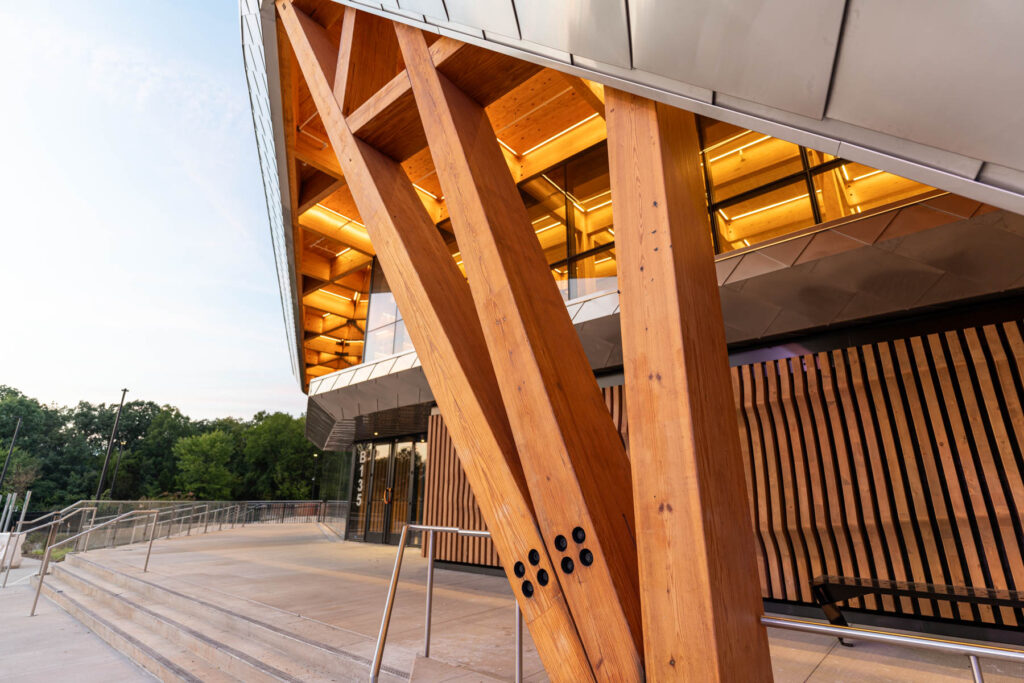
Mass timber opens the door to innovative design. Long spans with glulam beams and CLT floor structure create flexible plates for offices, hospitality, and community spaces. Exposed glulam columns contribute to a distinct identity that supports brand and tenant experience. Where design calls for additional capacity or different connections, hybrid structures use steel or concrete selectively, placing the right material in the right location.
Performance considerations remain front and center. Properly engineered mass timber building systems address fire resistance through charring calculations and tested assemblies; structural performance through panel orientation, span checks, and connections; and acoustic needs such as impact noise through topping slabs or resilient layers. The point isn’t that timber replaces other materials in every case. It’s that mass timber offers another capable, cost-effective option that can reduce environmental impact while delivering a refined interior.
Codes, Acceptance, and the Path to Widespread Adoption
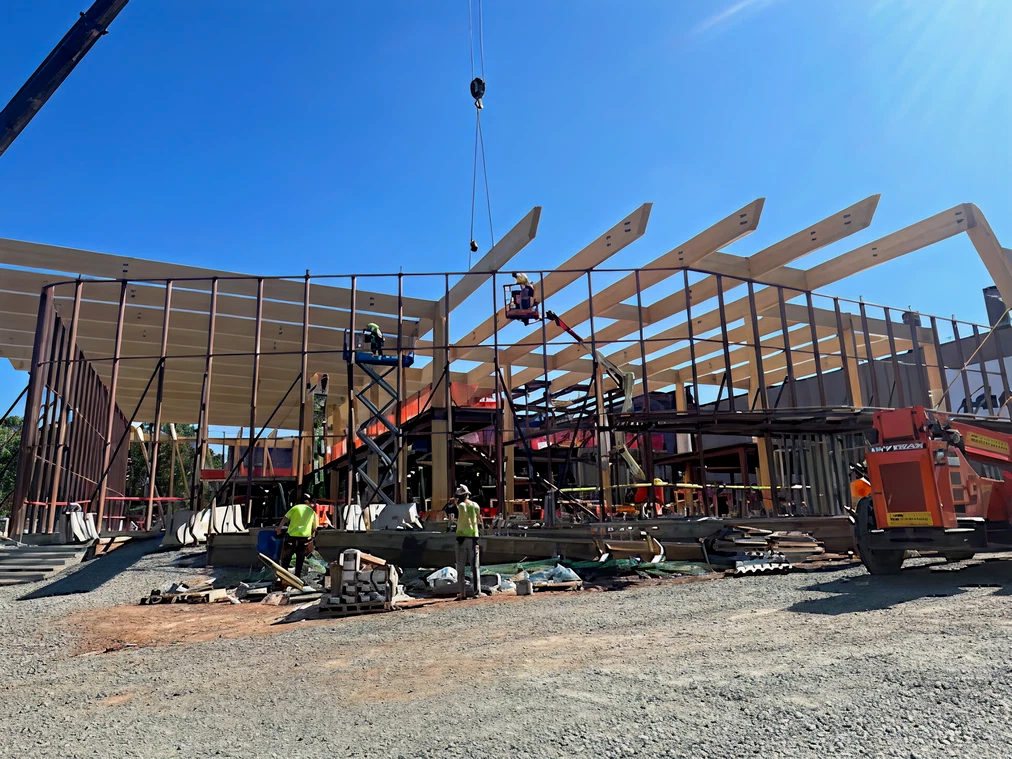
Building codes have expanded pathways for mass timber in commercial buildings, with clear routes for height, area, and fire performance when projects are designed and documented accordingly. This growing acceptance is a key reason more owners and architects are moving from first-time pilots to repeat mass timber projects. Early coordination keeps documentation tight and construction moving.
Where Mass Timber Fits Best
Mass timber is ideally suited for a range of building types: workplace, higher-education and community buildings, hospitality, and mixed-use development. In these settings, the combination of schedule efficiency, daylight-friendly spans, and exposed wood character creates places people want to use. In many applications, leaving portions of the mass timber building exposed reduces applied finishes and helps retain the honest expression of structure.
Comparing Materials: Timber, Steel, and Concrete (The Practical View)
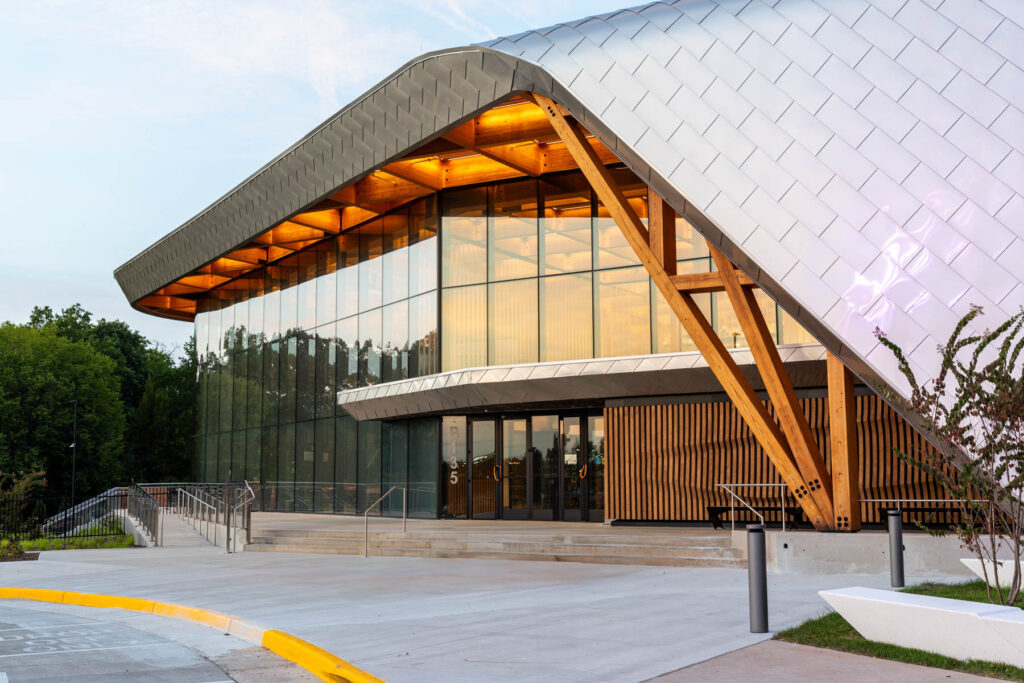
Every project has unique goals, spans, and performance targets. Mass timber works well as primary structure or as part of a hybrid approach with steel and concrete. Timber can lighten gravity loads on foundations, speed erection through off-site manufacturing, and deliver a finished interior in one step. Steel and concrete remain excellent choices where their strengths shine, including longer bay spacing, specific lateral strategies, or unique fire and vibration requirements. The best results come from selecting materials by function, not by habit.
How Project Teams Succeed with Mass Timber
Successful mass timber projects share a few traits: early engagement, clear documentation, and disciplined logistics. When the design team aligns CLT panel sizes, glulam grids, connection details, and erection sequencing early, the field moves faster and with fewer surprises. Protecting exposed surfaces during handling and installation matters too, so the finished product matches the design intent on day one.
A short checklist project teams find useful:
- Align goals for carbon, schedule, and budget at the outset.
- Coordinate panel sizes, beam depths, and connection details early.
- Plan site logistics for deliveries, staging, and crane access.
- Protect exposed wood during transport and installation to preserve finish quality.
Mass Timber in the Construction Industry: From Niche to Normal
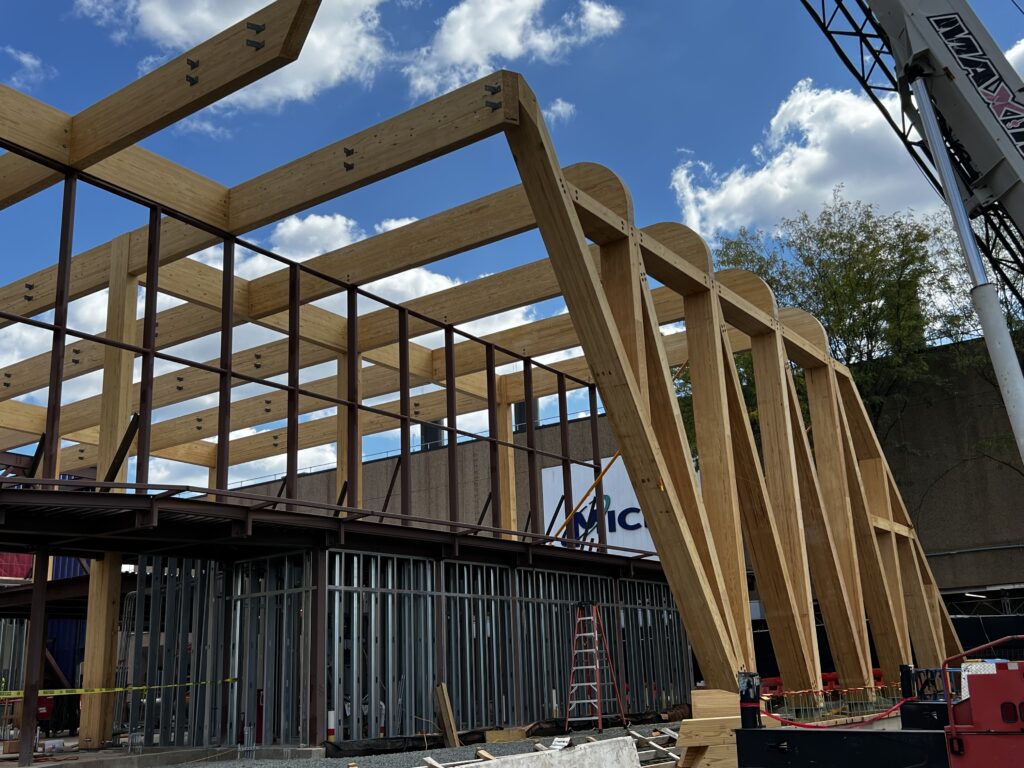
For years, mass timber was viewed as a niche choice for “innovative projects.” Today, broader supply, mature detailing, and growing code pathways are moving it into the mainstream of commercial buildings. Architects appreciate the creative flexibility. Owners see schedule benefits and a distinctive tenant experience. Builders value repeatable assemblies that install cleanly. As the industry advances sustainable building design, mass timber is positioned to play a significant role in a greener future.
Quarry View’s Approach to Mass & Heavy Timber
Our mindset is simple: combine craftsmanship with modern project delivery. We collaborate with architects and engineers early, provide constructability input, and coordinate installation so mass timber components arrive ready to set. In the field, our team focuses on accurate placement, protection of exposed surfaces, and a clean closeout. The goal is the same on every job: deliver a structure that performs, looks the part, and stands the test of time.
How we help project teams stay on track:
- Preconstruction support that clarifies sequencing and logistics.
- Coordination that aligns structure with envelope and MEP.
- Field practices that protect exposed wood and streamline installation.
Ready for Your Next Project?
Mass timber sustainable commercial building aligns environmental benefits with everyday project realities. By reducing embodied carbon, supporting energy efficiency, and delivering warm, inspiring interiors, mass timber gives owners and design teams a material that serves both people and planet. If you’re evaluating options for your next project, consider how CLT panels, glulam beams, and exposed wood interiors could support your goals for performance, schedule, and design.
When you’re ready to discuss feasibility, Quarry View Building Group is here to collaborate early, clearly, and with the craftsmanship that brings the vision to life.


